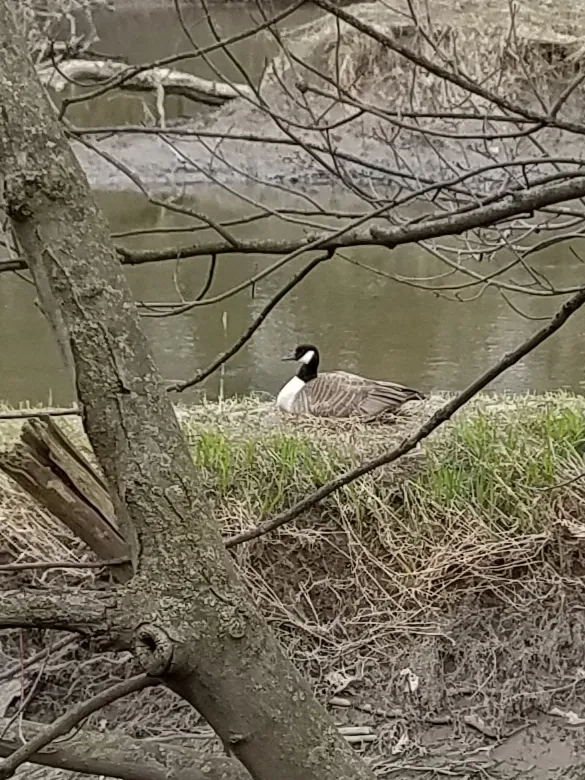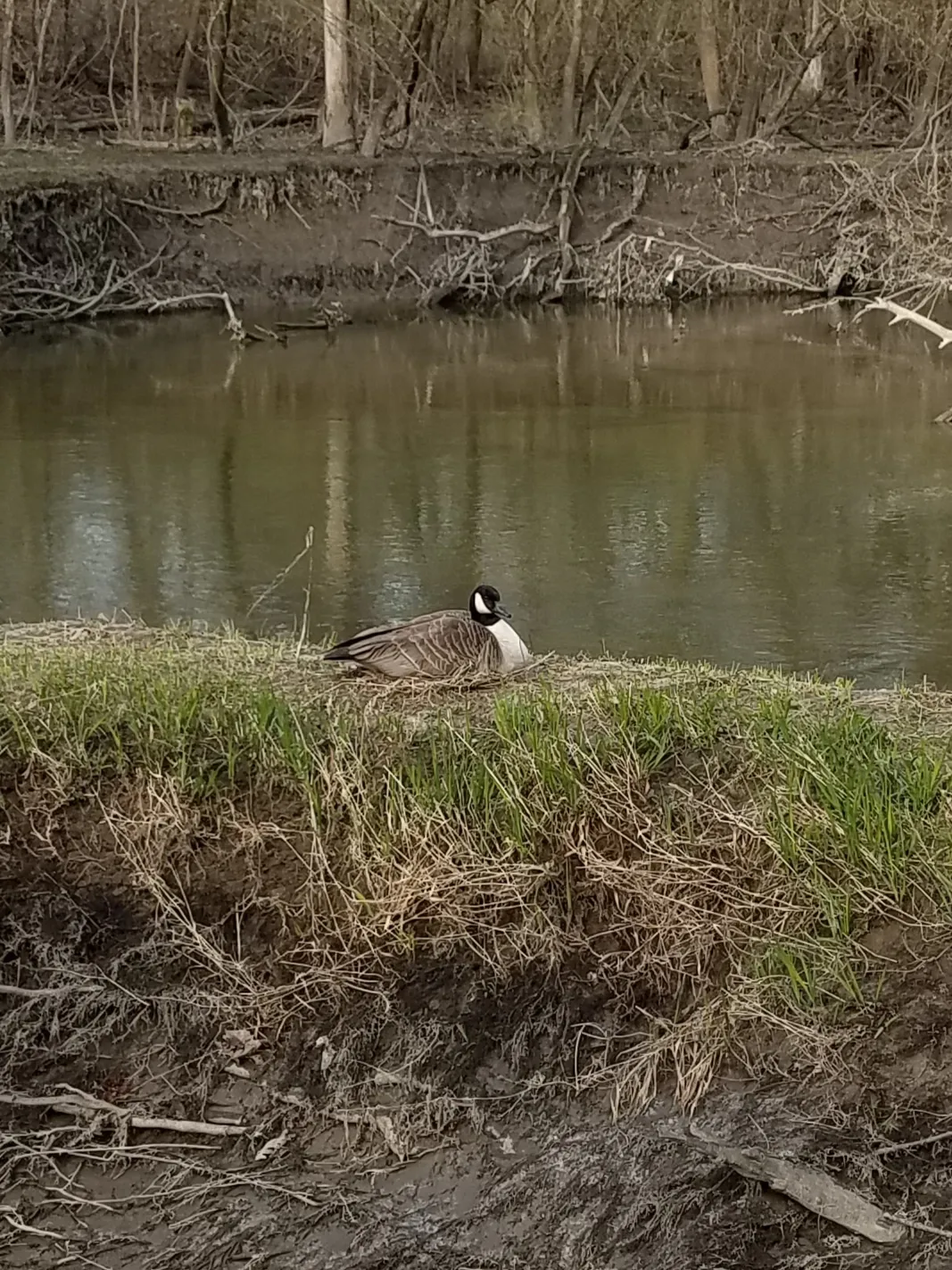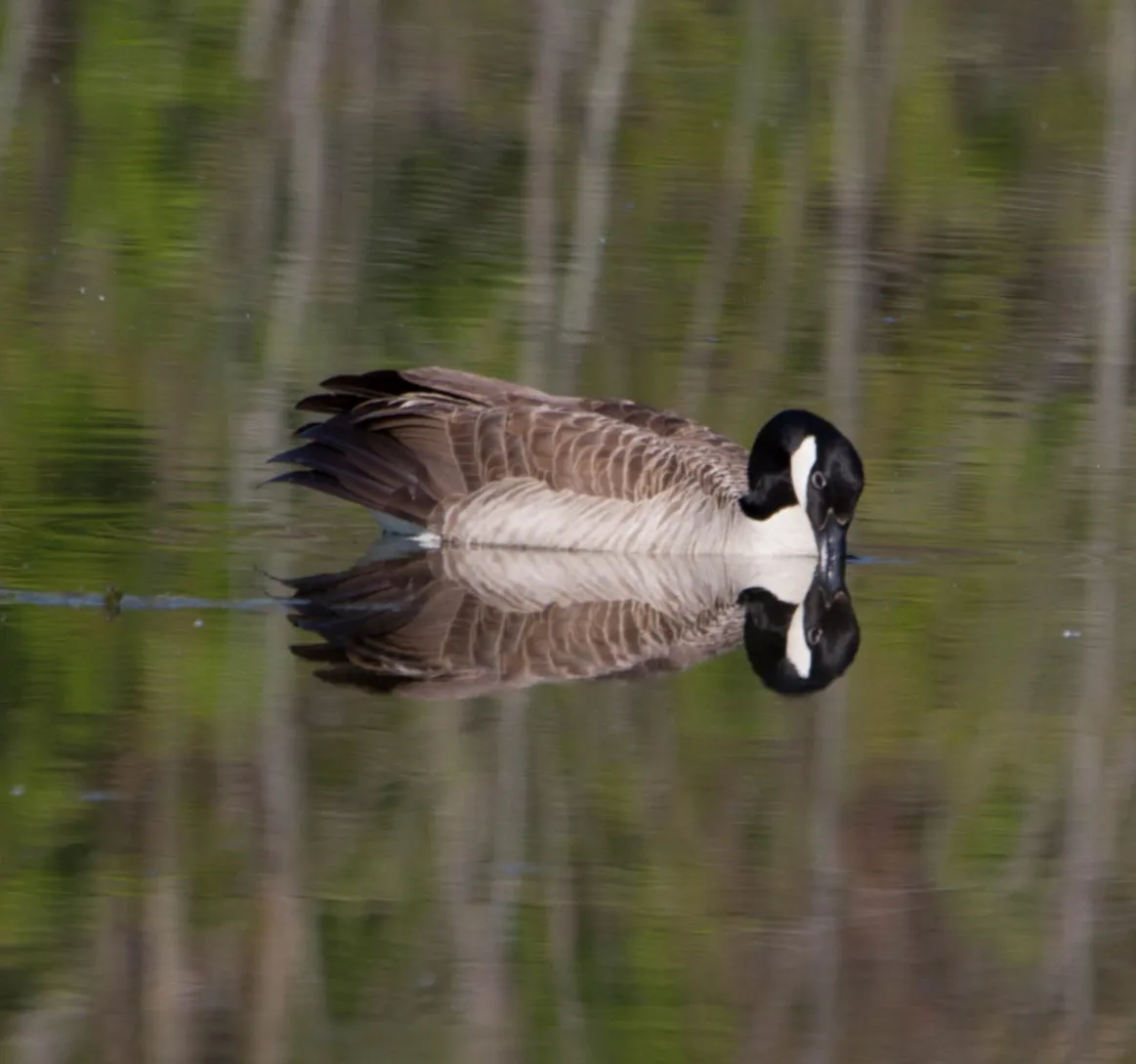As a dedicated observer of bird nesting habits in Eliza Howell Park, I have a keen interest in how various species build their nests, share incubation duties, and raise their young. Recently, I discovered a fresh Canada goose nest in an ideal spot for ongoing monitoring, allowing me to document their fascinating Canada goose nesting behavior. This provides valuable insights into their protective strategies and family dynamics, drawing from both personal sightings and established ornithological knowledge.
Canada geese, known scientifically as Branta canadensis, exhibit distinctive nesting practices that prioritize visibility and defense over concealment. Unlike many songbirds that rely on camouflage, these large waterfowl choose open ground sites near water bodies. This positioning enables the parents to spot potential threats from all angles, ready to mount an aggressive defense.
 20200416_125531
20200416_125531
Nest Location and Defensive Posture
The nest I found follows the classic Canada goose blueprint: a shallow depression on the ground adjacent to a pond or marsh edge. Surrounded by sparse vegetation, it offers panoramic views, which is crucial since geese are bold defenders. According to the Cornell Lab of Ornithology, this setup allows them to confront predators like coyotes, foxes, or even humans head-on.
On my first approach, the gander issued a clear warning hiss and spread his wings, signaling me to back off. This aggressive posture is standard; males stand sentinel while females tend the clutch. Repeated visits confirmed the male’s constant proximity, either patrolling the shore or floating nearby in the water.
 20200415_120551
20200415_120551
Such vigilance underscores their commitment to nest security. Experts from the U.S. Fish and Wildlife Service note that Canada geese will charge intruders, using their size and powerful wings as weapons.
Minimalist Nest Design
Canada goose nests are simple yet functional—a modest bowl scraped into the earth, lined with dead grasses, reeds, and down feathers plucked from the female’s breast. This insulation helps regulate egg temperature during the 25-30 day incubation period. No elaborate architecture here; functionality trumps aesthetics.
The female lays 2-8 creamy-white eggs, typically one per day until the clutch is complete. Once laying finishes, she settles in for uninterrupted incubation, relying on the male for protection. Published accounts, including those from the Audubon Society, confirm she forgoes food, water, and bathing for nearly four weeks, sustained by pre-laying reserves.
 20200415_172353
20200415_172353
Photo by Margaret Weber
This extreme dedication means observers rarely glimpse the eggs unattended, unlike with species like robins or warblers.
Parental Roles During Incubation
Sexual dimorphism is minimal in Canada geese—males and females appear nearly identical, making roles hard to distinguish without behavioral cues. The female handles all incubation, while the male acts as a vigilant guard. This partnership extends post-hatching, contrasting sharply with many ducks where males abandon the family early.
For context, in mallards, drakes leave after pairing, leaving hens solo. Geese, however, form tight-knit units. Learn more about related aspects like canadian geese mating behavior, which influences their loyal parenting.
 Resized_20200416_124935
Resized_20200416_124935
Gosling Development and Family Life
Goslings emerge precocial—fully feathered, mobile, and imprinted on parents within hours of hatching. They can walk, swim, and forage almost immediately, following adults to dabble for aquatic plants and grasses. The family unit travels in formation: one parent leads, the other trails, shepherding the brood for weeks.
This cooperative rearing boosts survival rates amid urban challenges. In parks like Eliza Howell, families are commonly seen parading single-file across lawns.
 20200415_172508
20200415_172508
Photo by Margaret Weber
While Canada geese thrive in human-altered landscapes—thanks to their grass-digesting prowess and expansive lawns—they sometimes earn “pest” status in golf courses and parks due to large flocks. Nonetheless, their nesting prowess remains a highlight of spring wildlife viewing.
In summary, Canada goose nesting behavior exemplifies devoted parenthood and strategic defense. From the minimalist nest to unwavering vigilance, these birds offer endless fascination. For safe observation, maintain a respectful distance—well beyond 6 feet—to avoid disturbance. Whether you’re a park visitor or backyard birder, tuning into these rituals deepens appreciation for local wildlife. Check local birding resources or apps like eBird for more sightings and tips.
References
- Cornell Lab of Ornithology: All About Birds – Canada Goose
- Audubon Society: Canada Goose Fact Sheet
- U.S. Fish and Wildlife Service: Waterfowl Management Guidelines
